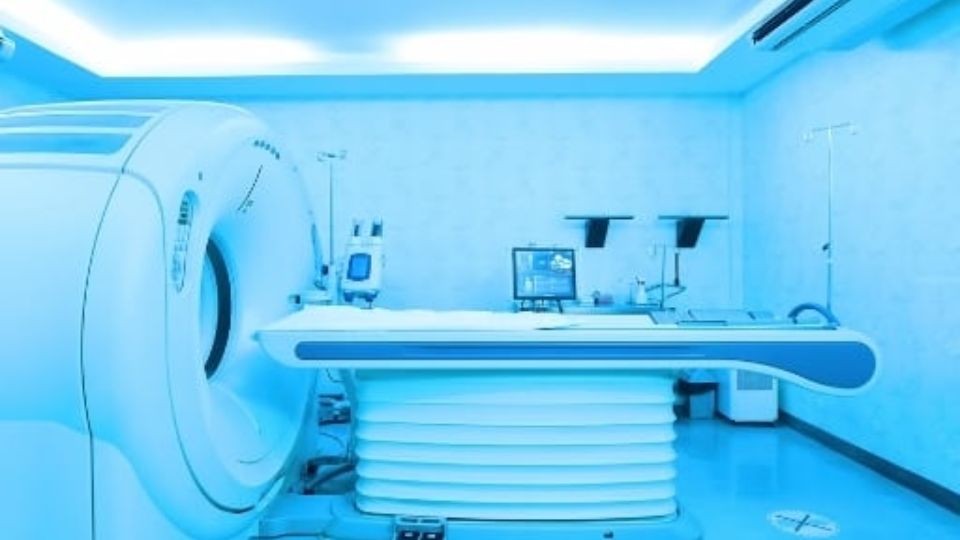What is MRI?
MRI is a non-invasive medical device that combines medical software for imaging techniques that produce three-dimensional anatomically accurate images. It is usually used for infection detection, diagnosis, and treatment control. The change in the direction of the rotational axes of protons that make up live tissues is induced and observed based on advanced technology.
How Does the MRI Function?
MRI employs a magnetic field. To produce a strong magnetic field that causes protons to align with this field in the body, MRI uses powerful magnets. After the alignment, the technician generates radiofrequency pulses through the patient body.
The protons are activated and spin out of reach and pressed on to the pull of the magnetic field. When the radiofrequency field is shut off, the MRI sensors can sense the energy generated by reorganizing the protons with the magnetic field.
Following the environment and composition of molecules, the time is taken to reconnect the protons with the magnetic field, and the amount of energy emitted varies. Based on these magnetic properties, doctors can tell the difference between various kinds of tissue.
How Are X-Rays Functioning?
For an MRI image to be obtained, to avoid blurring the image, a patient must remain very still within the large magnet during the imaging process.To increase the speed at which protons are intravenously re-aligned to the magnetic field before or during the MRI, contrast agents may be used.
What Are the Uses of MRI?
MRI scanners are particularly suitable for picturing non-bony components or soft body tissues. They differ from CT because the x-hazardous ray’s ionizing radiation is not used. MRI can be observed far more clearly in the brain, spinal cord, nerves, muscles, ligaments, or tendons than with ordinary X-rays and CT; that is why MRI is often used to picture injuries knee and shoulder.
MRI can be used in the brain to differentiate white matter from grey matter and can also be used to diagnose aneurysms and tumors. Because MRI does not use x-rays or other radiation, when frequent diagnostics or therapies, especially within the brain, are required, it is the imaging method of choice. However, MRIs are more costly than scanning by x-ray or CT.
With the help of Functional MRI we can observe brain structures and determine which brain areas are ‘activated’ in different cognitive tasks (consuming more oxygen). It helps to increase understanding of the brain’s organization and provides a new possible standard for evaluating neurological and neurosurgical conditions.
Compliance With Information Security Rules
The MRI is a medical device that involves PHI (Protected Health Information) that requires special handling according to local and international laws.
The MRI results, which contain private health information need to be transmitted and interpreted by a Radiology doctor. Once this is done, the results are sent to the attending physician and possibly shown in the patient medical case – online.
This all contains risks to the PHI (such as unauthorized disclosure, lack of information integrity or availability, etc.), leading to devastating consequences for the Individual and the organization (financial loss due to enormous legal fines and loss of reputation).
Handling PHI means that the organization needs to establish compliance with Information and privacy security laws. When the business organization takes place in the U.S it shall be obliged to comply with The HIPAA Health Insurance Portability and Accountability Act of 1996.
When the business organization takes place in Europe (EU), it shall be obliged to comply with The GDPR (General Data Protection Regulation) and/or any other applicable laws in the organization environment.
In this special case of Individual medical information, ISO 27001 and the complementary 27799 provide you with a framework and guidelines for security information standards and management security information, including the implementation and organization of security controls applicable to the surrounding organization’s information security risks.
By implementing ISO 27001:2013 and the complementary 27799 ISO 27799:2016, healthcare organizations, medical device companies and other facilities using protected health information shall be able to ensure a necessary level of security that is suitable to their organization’s environments and that will maintain Confidentiality, Integrity, and Availability (CIA) requirements of personal health information under their scope.
PHI can be in all aspects of health information and in any form (numbers, words, drawings, audio recordings, video, medical images such as MRI), whatever means are used to store it (hard and/or soft copies) and whatever means are used to transmit it (by mail, through facsimilia, over computer networks, etc.), as the information shall always be suitably protected.
Validation and Registration
All of these processes need to happen simultaneously while the medical device itself, in this case, the MRI, needs to be validated and registered formally. For medical device registration and marketing in Israel click here.
Unsatisfactory validation is one of the most common issues leading to the involvement, investigation warnings, and fines from the US Food and Drug Administration. Furthermore, this inadequate validation process could end up causing a health risk to the end-user.
This is the reason why complying with the requirements is essential. Organizations involved in the manufacture and distribution of medical devices intended for use in the U.S. are obliged to register annually with the US Food and Drug Administration – the FDA. This process is known as establishment registration (Title 21 CFR Part 807).
ESTABLISHMENT REGISTRATION AND DEVICE LISTING FOR MANUFACTURERS AND INITIAL IMPORTERS OF DEVICES
According to the definitions of FDA (21 CFR 820.3):
(z) Validation means confirmation by examination and provision of objective evidence that the particular requirements for specific intended use can be consistently fulfilled.
(1) Process validation means establishing by objective evidence that a process consistently produces a result or product meeting its predetermined specifications.
(2) Design validation means establishing by objective evidence that device specifications conform with user needs and intended use(s).








